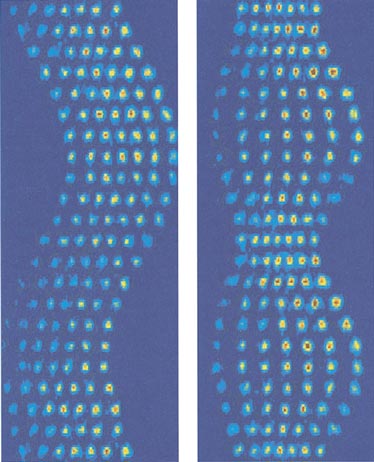
This Article From Issue
March-April 2001
Volume 89, Number 2
DOI: 10.1511/2001.18.0
The Physics of Quantum Information: Quantum Cryptography, Quantum Teleportation, Quantum Computation. Dirk Bouwmeester, Artur Ekert, Anton Zeilinger (eds.). xvi + 314 pp. Springer, 2000. $54.
The 1990s have seen the development of a remarkable new interdisciplinary field straddling the boundary between computer science and quantum physics. If digital information is encoded in the discrete stationary states of individual quantum systems, and if those systems can be effectively isolated from all extraneous interactions, then dramatic new possibilities arise for the processing and transmission of information. No one ever imagined such possibilities during the past half century, as information theory and computer science acquired their present forms.

From The Physics of Quantum Information.
The most spectacular development to date was the discovery in 1994 that a quantum computer could factor the product of two large prime numbers vastly more efficiently than the best algorithms anybody has been able to devise for conventional computers. Since the presumed difficulty in factoring underlies the security of many of the most powerful encryption schemes, formerly esoteric research into the strange and obscure role that information plays at the foundations of quantum physics suddenly became of military and commercial interest.
Unfortunately, we are far from being able to build a functioning quantum computer that can establish that 15 = 5 x 3, much less factor a product of two 200-digit prime numbers used in public-key cryptography. Fortunately for researchers in this new branch of fundamental science, however, those who use codes in warfare, commerce or diplomacy want their secret messages to remain secure for many decades, so lack of feasibility in the near or even the not-so-near future does not threaten the boom in support for the new and intellectually exquisite field of quantum information theory.
Being less than a decade old, the subject until recently lacked a published textbook, but there has been much pedagogical material available on the Web, some of it very good indeed. More than in most fields, one can also follow cutting-edge research on a day-to-day basis in the "quant-ph" subdivision of Paul Ginsparg's wonderful Los Alamos e-Print archive (http://arXiv.org). Traditional publishers are just beginning to produce traditional books, of which The Physics of Quantum Information is one of the earliest.
In addition to quantum computation, the subtitle cites quantum cryptography and quantum teleportation. Quantum cryptography offers an immediately feasible antidote to the long-term threat to security posed by fast quantum factorization. It is based not on further dramatic new possibilities for computation, but on the celebrated impossibility of reading information out of quantum states without leaving telltale evidence of eavesdropping. Quantum teleportation, I suspect, is in the title mainly because the phrase captures attention in a way that "use of shared entanglement to reconstruct an unknown quantum state" does not.
Included among the more than 40 contributors to this book are some of the subject's leading European practitioners. Individually or in groups of two, three, four or even more, they have collaborated in various combinations to produce the many subsections into which each of the eight chapters has been divided. Topics are well balanced between presentations of the theory (dazzling in its ingenuity) and crude attempts at its implementation (tours de force of technology, but still a long way from any nontrivial computational application).
As one might expect, a book written by so many subcommittees is not a masterpiece of coherent pedagogy. (For a genuine textbook that assumes virtually no background in quantum physics, computer science or information theory, I would recommend the recently published Quantum Computation and Quantum Information [Cambridge University Press], by Michael A. Nielsen and Isaac L. Chuang.) But The Physics of Quantum Information does convey a thorough and authoritative picture of the state of this fascinating futuristic art as we enter the 21st century.—N. David Mermin, Department of Physics, Cornell University
American Scientist Comments and Discussion
To discuss our articles or comment on them, please share them and tag American Scientist on social media platforms. Here are links to our profiles on Twitter, Facebook, and LinkedIn.
If we re-share your post, we will moderate comments/discussion following our comments policy.